5 /10 1 Votes5
Director(s) H. Iijima Writer(s) H. Iijima Initial release date 1988 | 5/10 IGN Artist(s) Shinobu Iwabayashi Mode(s) Two-player, co-op | |||||||||||||||||||||||||||||||||
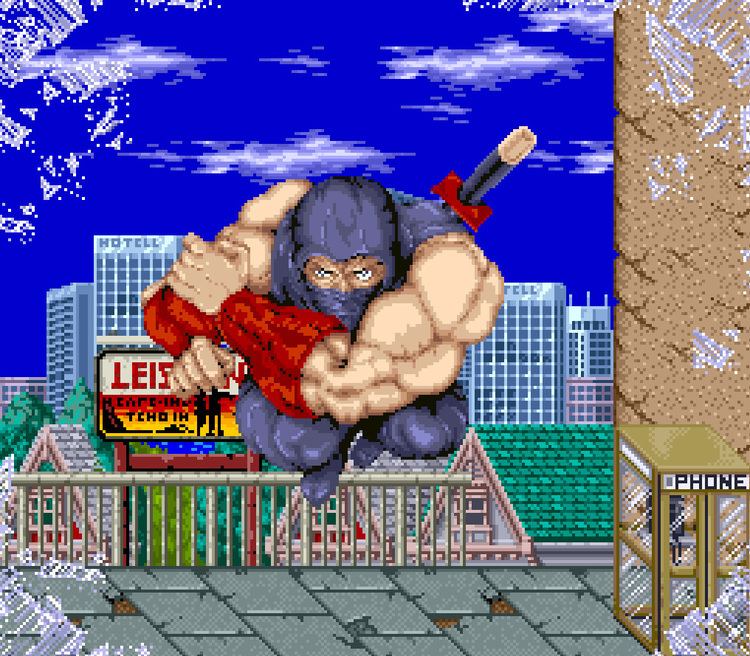 | ||||||||||||||||||||||||||||||||||
Composer(s) Mikio SaitouIchiro NakagawaRyuichi NittaTamotsu Ebisawa Similar Ninja Gaiden games, Tecmo games, Beat 'em up games | ||||||||||||||||||||||||||||||||||
Ninja Gaiden, later released in Japan as Ninja Ryūkenden (Japanese: 忍者龍剣伝, lit. "Ninja Dragon Sword Legend") and in Europe as Shadow Warriors, is a 1988 side-scrolling beat-'em-up originally released by Tecmo as a coin-operated arcade video game. It was first released in North America, and Europe in 1988 and in Japan in 1989. The Ninja Gaiden arcade game was produced and released almost simultaneously with its home console counterpart for the Nintendo Entertainment System, although they are different games with only a few similarities. The designer of the arcade game is only credited as "Strong Shima", but Masato Kato, who worked on the NES version, identified him as one "Mr. Iijima".
Contents
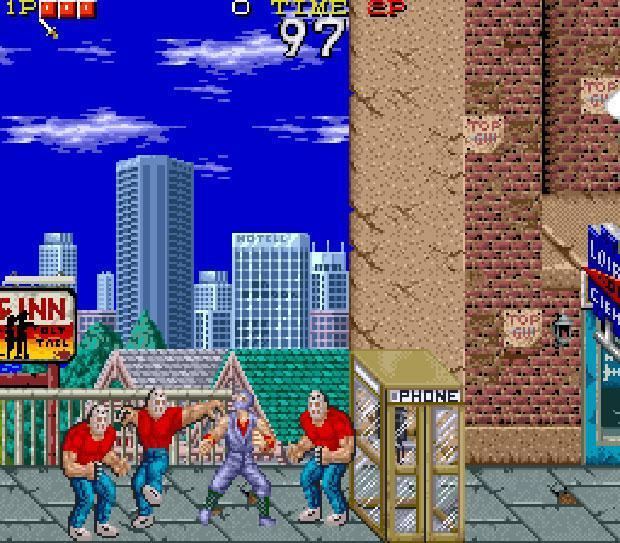
Home versions of the Ninja Gaiden arcade game were released in Europe under the Shadow Warriors title in 1990 by Ocean Software for five different computer platforms (Amiga, Atari ST, Commodore 64, ZX Spectrum, and Amstrad CPC) and in North America for IBM PC by Hi-Tech Expressions. An Atari Lynx version was also released. The arcade version of Ninja Gaiden is also included as a hidden bonus game in Ninja Gaiden Black for the Xbox in 2005. The arcade game was published as a Virtual Console game for the Nintendo Wii in 2009.
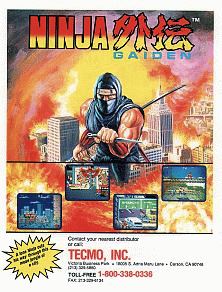
Gameplay
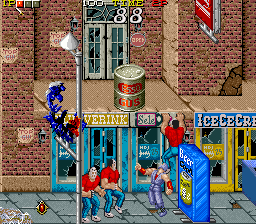
The arcade version of Ninja Gaiden is a side-scrolling beat-'em-up where the player controls a ninja hired to defeat an evil cult led by Bladedamus, a descendant of Nostradamus who seeks to fulfill his end of the world prophecies. The first player controls a ninja dressed in blue, while the second player controls one dressed in orange. Like most beat-'em-ups, the player proceed through stages by defeating enemies scattered through each area.
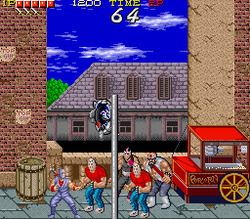
The controls consists of an eight-way joystick with a button installed on top and two additional action buttons for attacking and jumping. The button on top of the joystick allows the player character to grab onto any overhead bar or tightrope and hang from there. There are five primary techniques performed by pressing the joystick and buttons individually or in combination with each other. These consists of the "Triple Blow Combination" (a series of punches and kicks that serve as the player's standard attack), the "Flying Neck Throw" (performed by attacking the enemy while jumping), the "Hang Kick" (performed by attacking the enemy while hanging from a bar), the "Tightrope Walk" (in which the player moves while hanging from or standing above a tightrope), and the "Phoenix Backflip" (a backflip performed after running into a wall), which becomes an attack if the player has a sword.
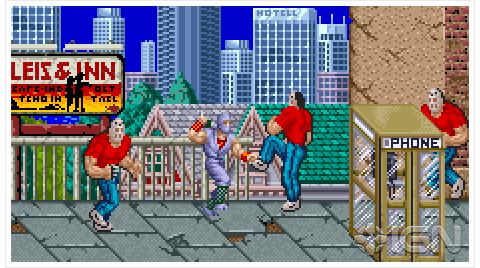
The player can destroy certain objects in the environment (such as telephone booths, signposts, dumpsters) by knocking or throwing enemies onto them. These will uncover hidden items that will award the player with bonus points, health recovery, time extensions and even an extra life. One particular item will temporarily arm the player with a sword that can be used up to ten times before reverting back to his standard punches and kicks.
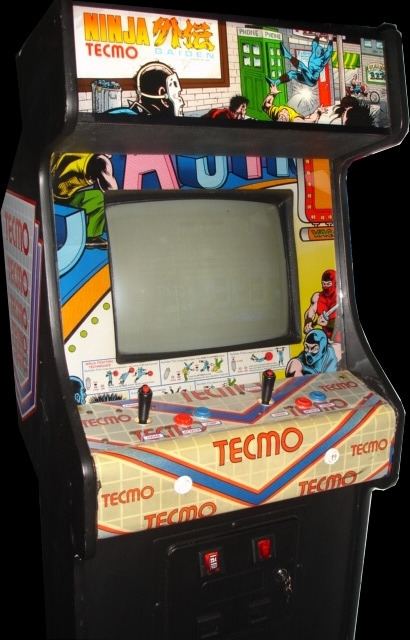
The game is mostly remembered for its morbid continue screen, where the player character is tied to a table thrashing his head violently while a circular saw is being lowered towards him. If the player does not continue within the 10 second countdown, the screen fades to red, the ninja cries out in agony, and the words "GAME OVER" appears followed by dramatic music. Final Fight, released a year later, had a similar sequence, with the characters tied up next to a stick of dynamite.
The first five stages are based on actual American cities and landmarks such as Los Angeles, Brooklyn, Las Vegas, North Carolina, the Grand Canyon, and a transcontinental railroad. The sixth and final stage set inside the enemy's hideout. The recurring bosses includes a sumo wrestler; a pair of wrestlers resembling the tag team The Road Warriors; and a trio of claw-wielding masked acrobats. The final boss, Bladedamus, wields two swords and has a fire breath attack.
Critical reaction
The game was well received. Your Sinclair praised the colorful graphics and interactive backgrounds. Crash liked the animation, but had grown tired of the genre. Sinclair User summed it up with "There isn't really a speck of originality about Shadow Warriors. Nonetheless, it will be a stiff challenge." C+VG highlighted the music and sound effects.
Regional differences
Ninja Ryukenden, the Japanese version, being the later version of the game, has the following differences from the other versions:
Virtual Console
This game has been ported to the Nintendo Wii as a downloadable Virtual Console Arcade game. However this contains several differences.
